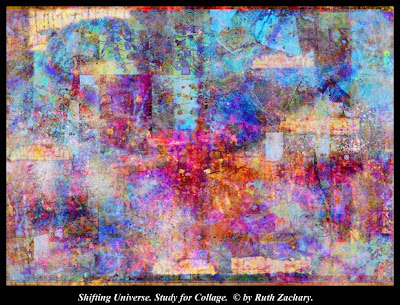.
A MONTAGE APPROACH to ILLUSTRATION
.
Recently, I assembled a book of Poetry, which is about women who seek to define themselves within the culture at large, and have chosen new names which they feel help define this new identity. The cover, to be in color, was a colored pencil drawing on collaged papers and is shown above.
.
I decided to include 10 illustrations, black and white images of the etchings originally in color. The illustrations do not directly illustrate any particular poem. But the relationship of metaphoric imagery to metaphoric poetry reveals both to be part of a similar process. When and if the book is published, I will announce it on this blog and on my rzwritestuff blog, as well.
.
Because I am so busy arranging the poems, proofreading and polishing them, I have fallen behind on my intended schedule for blogging on four different sites. I have not included many Etchings on this blog in the past. .I thought using the etchings as images would be appropriate at this time and might help me keep up with this blog. Many of the etchings are montages of more than one element. I will include the color versions here in the coming series of posts. They are still available as giclee prints, but most etching editions were sold out.
.
The image above used collaged papers which were created by cleaning off printmaking rollers after printing color etchings, and sometimes viscosity etchings. After the background was assembled, colored pencils were used to draw the wolf, the landscape and wolf pack elements, and the woman. I tried to make the woman look like a wolf, with almost golden eyes.
.
Images and text are the exclusive copyright © of Ruth Zachary.




















